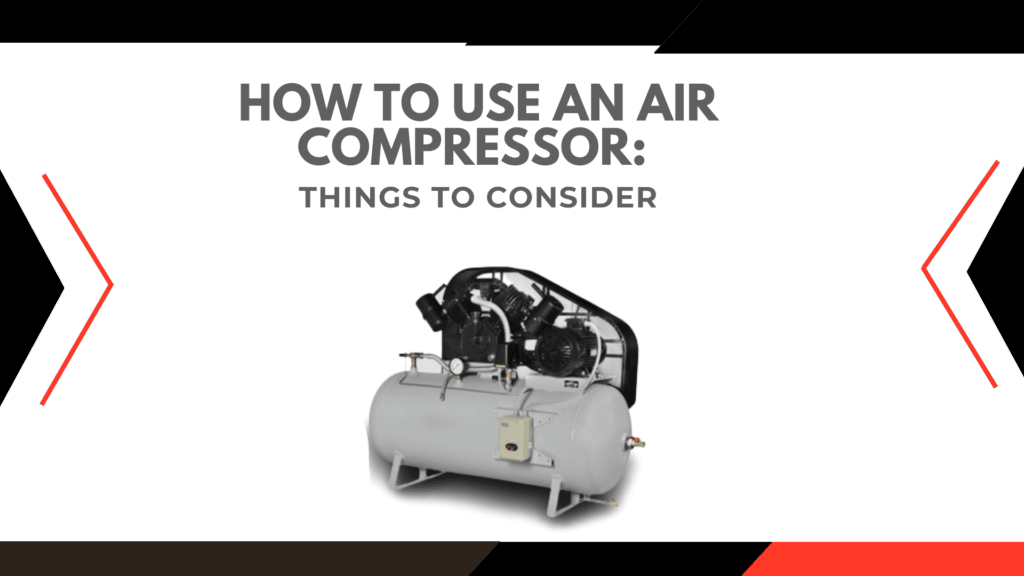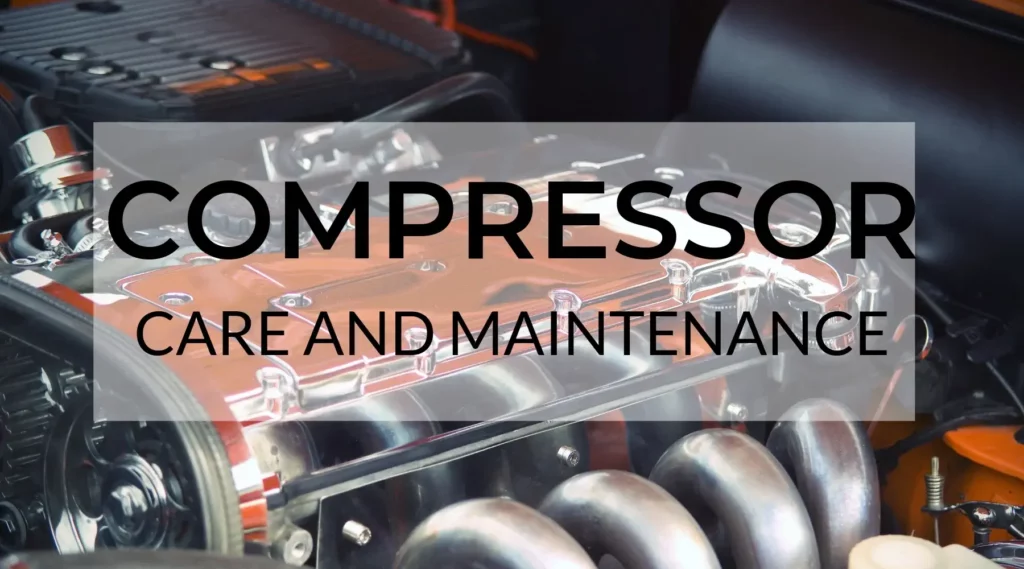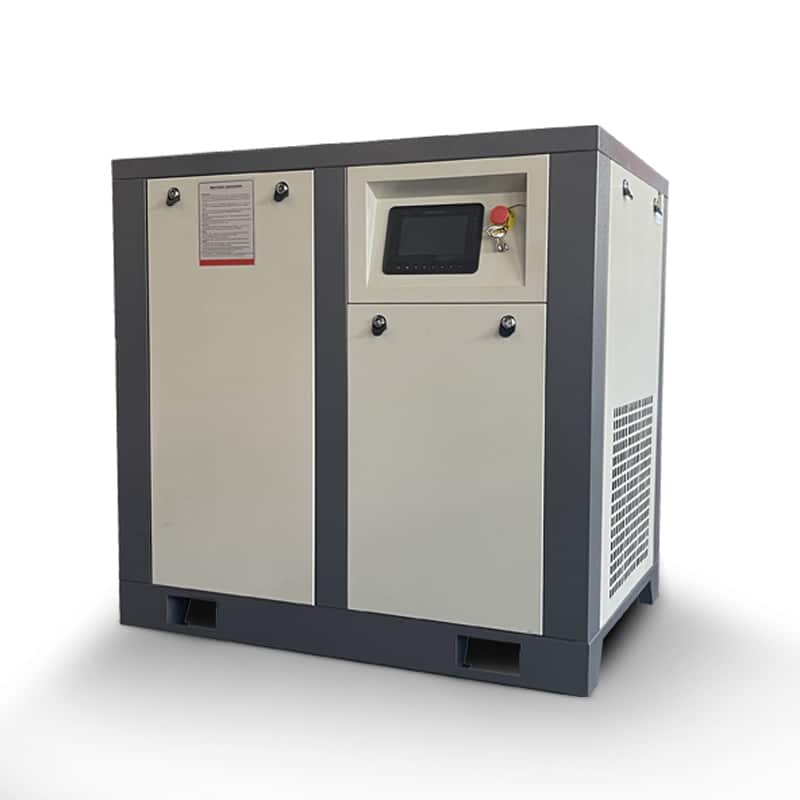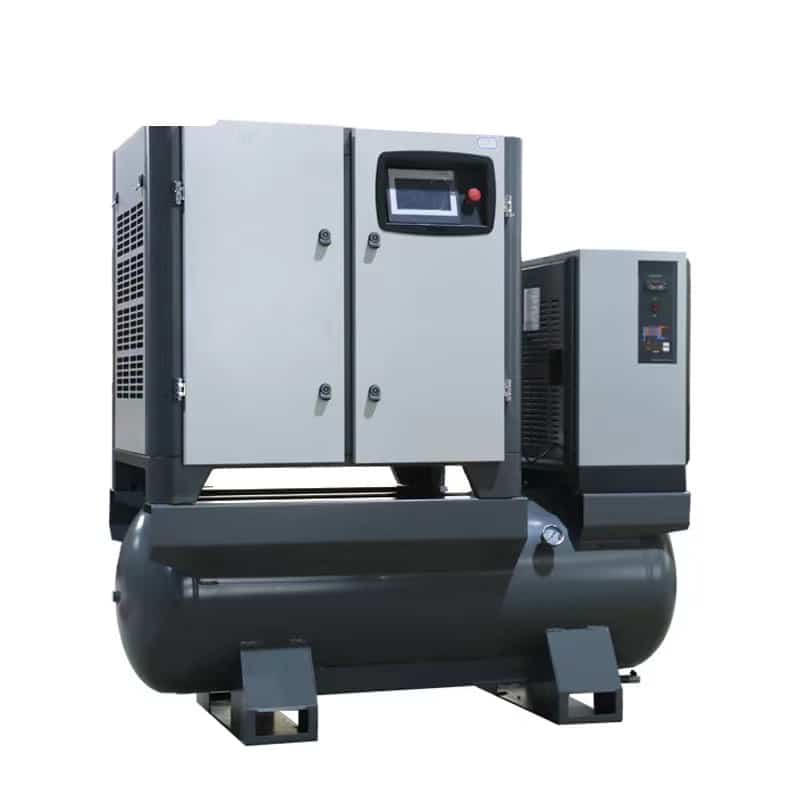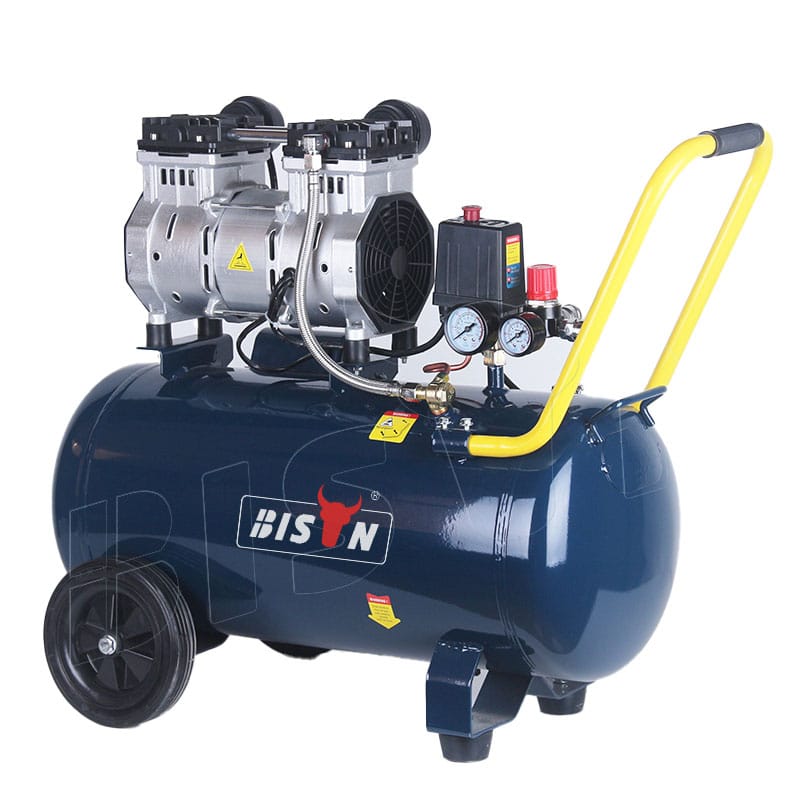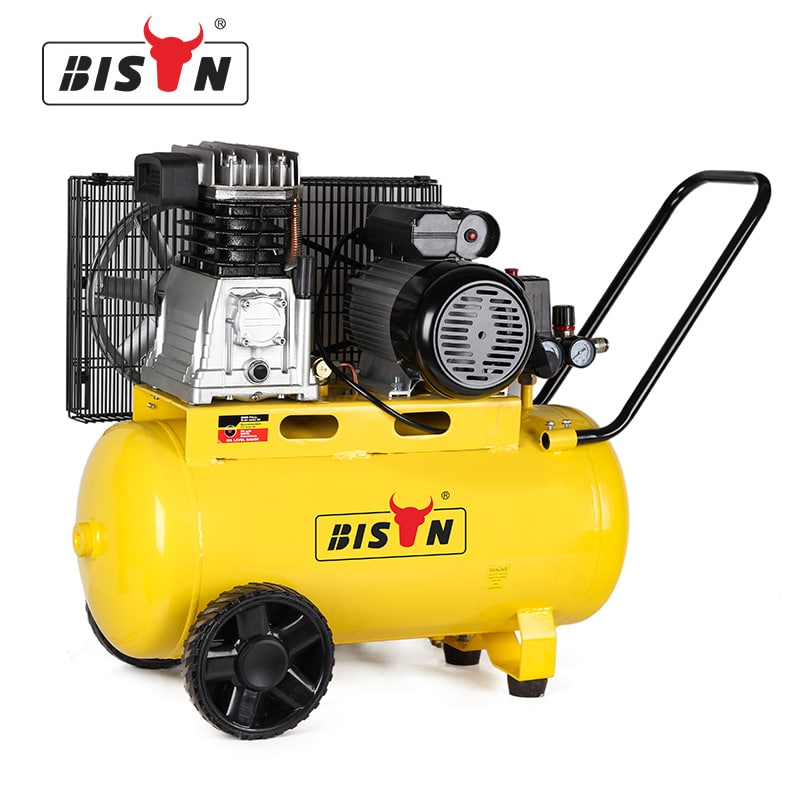air compressor blog
How to use an air compressor?
- Jul 26, 2023
Air compressors were once only found in the garage or workshops of the most professional home artisans and mechanics. Still, a wide variety of small compressors are now available that are no longer just a tool for professionals or seasoned DIYers. They can power numerous air (pneumatic) tools used in many applications. How to use an air compressor?
Air compressors store the compressed air in a steel tank and release it in a controlled manner to operate a wide variety of tool accessories, from air wrenches to sanding and grinding equipment to air nailers to painting tools. An electric motor on the compressor unit pumps air under pressure into the tank and maintains it at a pressure high enough to power the tools connected to the tank by air hoses. During regular tool operation, the compressor’s motor automatically turns on and off in response to fluctuations in air pressure in the tank. For example, when running a paint sprayer, you’ll hear the motor starting as the air in the tank drops, and the motor shuts off every time the tank pressure reaches a set limit.
The advantage of using air tools is that you don’t need a whole set of tools; each has its motor. Instead, a single motor-driven air compressor can power many relatively inexpensive accessories. Air tools can also generate more power than many handheld power tools.
How to use an air compressor
Below are some basic instructions for using an air compressor common to all models.
Step 1: Plug in the compressor
Place the compressor on a sturdy, flat work area. Make sure the power switch is off. Plug the power cord into a grounded (three-phase) electrical outlet.
Step 2: Check the oil
If your compressor is a piston compressor, ensure enough oil is in the crankcase. Check the oil level by looking at the sight gauge on the bottom of the compressor motor. Remove the oil filler cap and simply add compressor oil to bring the oil level to full mark on the indicator. Check the oil level after each use.
Step 3: Test the safety valve
Pull the safety valve. You should be able to find it near the hose. You’re in good shape if you pull it and hear the air hiss. Push the valve back in place before you start the compressor. If you don’t hear the air escaping but can put the valve back in place, you probably don’t have a problem yet.
Step 4: Fill the air tank
Tighten clockwise with an adjustable wrench, ensuring the drain valve which is at the bottom of the tank is closed. Turn on the power switch and let the compressor run for a few minutes. Check the built-in air pressure gauge to ensure the compressor shuts off automatically on its own when the air pressure reaches 100 to 115 psi. Tank pressure capacity varies by model.
Step 5: Adjust the air control valve
Adjust the air control valve to match the maximum air pressure allowed on the air tool you use. Do this by turning the air control valve in either direction until the air pressure gauge reads the correct air pressure for the tool.
Step 6: Connect the air hose
Connect the air hose to the compressor, ensuring it is long enough to reach the work area. Wrap the threaded end of the air hose with two layers of Teflon tape, then thread the hose to the compressor fitting (located near the air pressure gauge). Tighten clockwise with an adjustable wrench.
Some compressors may have quick-connect hose fittings to connect to the air tank.
Step 7: Connect the air tool
Connect the air tool to the other end of the air hose using the quick-connect fitting. Pull back on the spring ring on the hose and push it firmly onto the tool’s air inlet. Release the collar to secure the connection.
Pull back on the collar to disconnect while pulling the tool out of the air hose.
Step 8: Drain moisture after use
Periodically drain the water from the air tank by loosening and removing the drain valve on the bottom with an adjustable wrench in a counterclockwise direction (check the owner’s manual for recommendations). When all the water has drained out from the tank, replace the drain valve and tighten it clockwise.
Step 9: Air tank life
Air compressor tanks have a limited lifespan. While draining the tank helps lengthen it, it still risks eventually bursting. Check the data label to know when the air tank should be replaced.
Step 10: Disconnect the air hose
When the tank is empty, unplug the air hose from the compressor. There may still be a little pressure in the hose, so make sure you hold it tight so it doesn’t snap at you when you disconnect it from the coupler.
Step 11: Store your compressor
Finally, you’ll need to neatly reel up the power cord and air hose and store everything away for subsequent use. Keeping the compressor upright in a clean and (relatively) climate-controlled environment is best. Place it so it won’t be exposed to dust, dirt, or moisture.
How to maintain your air compressor
Now you know how to correctly use an air compressor, there is one more thing you need to know: how to maintain it and make it last longer appropriately.
- Store or place your air compressor on the floor, in a lower cabinet or on a lower shelf, and make sure the area is moisture-free.
- Always refer to your owner’s manual, as each type of air compressor has its own maintenance needs. Make sure you completely understand the requirements for your device.
- Check your fasteners regularly, as loose fasteners mean your air compressor will be less efficient.
- Keep the air intake clean to prevent clogged vents from reducing compressor performance.
- Change the oil in the air compressor annually.
- Check the hoses frequently, as holes and tears in the hoses can reduce machine performance.
- Check when the air tank needs to be replaced. The air receivers on these compressors have a limited lifespan, and even with the best care, they will wear out eventually and can be dangerous if not replaced in time.
- Always wear proper safety equipment for each tool you use. Portable air compressors significantly increase the safety and efficiency of such tools, but basic safety precautions must always be followed.
Know your air compressor
Many manufacturers sell air compressors, and they come in various designs. The two common types of air compressors are piston and diaphragm.
- Piston air compressors require oil, typically have a higher power output, and can run more extensive tools.
- The diaphragm type is more common in household tool sheds, and rubber diaphragms are used for sealing. These don’t require oil and are most commonly used on smaller tools such as nail guns and paint sprayers.
- Before you begin, knowing your particular air compressor’s rated duty cycle is essential. This is your machine’s ability to run for some time without breaking down.
Duty cycle ratings are expressed as a percentage, and a machine rated at 100% can run all day without any adverse effects. A machine rated at 50% will require as much downtime as it will run, so check the machine itself or the owner’s manual to see what the air compressor is rated to do.
Most machines rated below 100% will tell you how long the machine can run before it has to be shut down and rested.
Industrial uses of compressed air
Compressed air has proven worth in modern factories, withstanding harsh environments and providing clean, oil-free compressed air and power in areas where an electrical spark could flatten a building.
a) Car manufacturing
Automakers use compressed air systems to build critical components, assemble and move heavy objects, hold parts in place, and even finish them. As mentioned above, air compressors are essential to keeping millions of cars on the road. They play an important role in aftermarket operations in repair shops, body shops, collision centers, tire sales outlets and more.
b) Agriculture
In a typical agricultural business, air compressors power a variety of hand tools, from paint sprayers to staplers to nail guns. They inflate tires on personal cars, tractors, ATVs, plows, harvesters, and more. They help spray pesticides, control milking robots and move grain or other materials to silos or other storage areas. They pump compressed air into the wastewater to help break down animal waste.
c) Food and drinks
You’ll see air compressors in all parts of the industry, from microbreweries to food processing facilities. Food and beverage manufacturers require clean and consistent compressed air to perform various production tasks, including packaging, palletizing, bottling, filling equipment, and cooling and freezing products. Compressed air helps peel vegetables, fill pastries, increase productivity and reduce waste.
d) General Manufacturing
Today, most general manufacturers rely on compressed air to power their processes. The U.S. Department of Energy puts the number of U.S. manufacturers using compressed air at 70%.
Air compressors operate a wide and big range of air tools on the production line:
- They drive cutting and welding equipment.
- They blow air cans and plastic bottles and remove parts from production molds.
- They drive screws, turn nuts, adjust rollers and feed machinery.
- They power positioners, fixtures, punches, air chucks and air knives for blasting and metal finishing.
- They operate automated machines and monitor production.
- In addition, pneumatics drive finishing and packaging operations, including liquid filling, carton binding, utensil grinding, dry powder conveying and fluidization.
e) Mining
Mining operations use compressed air to operate a variety of pneumatic tools. In addition, it is used for extraction and conveying and drives material conveyors, drilling and blasting equipment, and piling equipment. Most importantly, the air compressor provides the miner with clean air, so failure is not an option.
f) Oil and gas
Because the oil and gas environment is both hazardous and harsh, rugged air compressors play a vital role in both onshore and offshore applications. They are used in all stages of the industry, including exploration, transportation, processing, refining and distribution.
Oil-free and oil-lubricated units are essential as backup air, trim air and point-of-use air. Compressed air systems involve vapor recovery, gas and wellhead pressurization, and landfill gas. They maintain or increase the flow of gas into the piping system.
Additionally, the compressor facilitates critical performance measurements of the well while fluids still flow from the reservoir.
g) Transportation
Air compressors provide reliable airflow to air brakes on trains and transport trucks. Additionally, they are responsible for driving windshield wipers and supporting truck maintenance. For railway applications, they also play a role in suspension systems and help open and close automatic doors.
So this was all about using an air compressor. Now you know the step-by-step process of using an air compressor. Every air compressor model is a little different, so we recommend you also look at your user manual before using an air compressor, especially for the first time, so you don’t miss any critical step specific to your compressor type and model.
frequently asked questions about How to use an air compressor?
How to choose a good air compressor?
When choosing or selecting an air compressor, consider the tools you plan to use, the size of your workplace, and the recommended air pressure for those tools. Also, ensure the compressor’s tank size and pump oil level suit your needs.
What is the difference between gas-powered and electric air compressors?
Gas-powered air compressors are generally more robust and portable, ideal for workplaces and outdoor work. Electric air compressors are quieter and better suited for indoor use.
What is a pressure relief valve on an air compressor, and why is it important?
The pressure relief valve is actually a safety feature that relieves air pressure in the compressor tank if it exceeds recommended levels. It is crucial to prevent accidents caused by escaping air.
What is compressed air?
Compressed air is the air that has been pressurized to greater than atmospheric pressure. It’s precisely the same as the air you breathe, except it’s compressed into a smaller volume and held under pressure. Air is composed of 78% nitrogen, 20-21% oxygen and approximately 1-2% other gasses plus water vapor. After compression, the air is still composed of the same mixture of gasses. However, it will be forced into a smaller space, bringing the molecules closer.
Compressed air can be stored at high pressure and is an excellent medium for transferring energy. Compressed air is a widespread energy source because it is safer and more accessible than alternatives such as steam and batteries. Steam can become very dangerous as it gets very hot, and the battery can die, making both options a disadvantage.
Compressed air is safe to use, easy to store and versatile.
If you have any enquiries about the BISON air compressor, we would love to hear from you.

